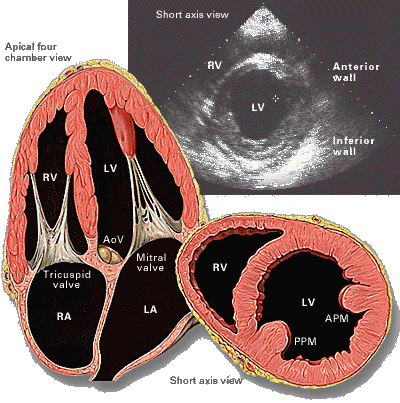Left ventricular ejection fraction (LVEF)

What is Left Ventricular Ejection Fraction
Left ventricular ejection fraction is the percent of BLOOD a full left ventricle pumps into the AORTA with each CARDIAC CYCLE. LVEF provides an assessment of cardiovascular limitations resulting from damage to the HEART such as by MYOCARDIAL INFARCTION or HEART FAILURE. Normal LVEF is 55 percent; LVEF below 35 percent indicates severe heart failure. Because it is not possible to directly measure the volume of blood the left ventricle pumps, cardiologists use indirect methods to calculate the LVEF. Among these methods are ECHOCARDIOGRAM with Doppler ULTRASOUND, radionuclide scans, and MAGNETIC RESONANCE IMAGING (MRI), all of which allow the cardiologist to mathematically determine the volume of the ventricle and visualize the flow of blood through the heart. LVEF is one method to monitor the progression of a degenerative cardiovascular condition such as heart failure as a criterion for HEART TRANSPLANTATION.
See also CARDIAC CAPACITY; CARDIAC OUTPUT.